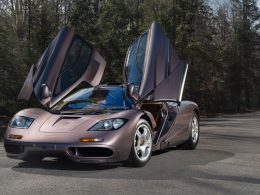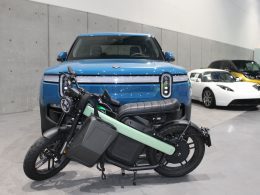Introduction
In the past decade, the landscape of consumer behavior within the automobile industry has undergone a profound transformation, triggering a notable stagnation in U.S. car sales. The convergence of various factors, including evolving preferences, technological advancements, economic shifts, and environmental consciousness, has redefined the way consumers perceive, purchase, and utilize automobiles. Exploring these changes offers critical insights into the factors contributing to the plateauing sales figures in the United States.
Evolution of Consumer Preferences
Rise of Sustainability Concerns
The increasing emphasis on environmental sustainability has revolutionized consumer preferences. With a heightened awareness of carbon footprints and environmental impact, consumers are increasingly leaning towards eco-friendly alternatives, such as electric and hybrid vehicles. This shift is a fundamental driver behind the declining interest in traditional gasoline-powered cars.
Embrace of Shared Mobility
The concept of car ownership has witnessed a transformation with the proliferation of shared mobility services. Ride-hailing platforms and car-sharing programs have provided consumers with convenient alternatives to owning a vehicle. This trend has particularly gained traction among urban dwellers, impacting the inclination towards car ownership.
Technological Advancements Shaping Choices
Emphasis on Connectivity and Autonomous Features
Technological advancements have elevated consumer expectations. The integration of smart features, connectivity options, and autonomous capabilities in vehicles has become a significant deciding factor for consumers. The demand for cars equipped with the latest tech has led to a shift in consumer preferences towards technologically advanced models.
Influence of E-commerce on Buying Behavior
The advent of e-commerce has not only transformed the way consumers shop for goods but has also influenced the automobile purchasing process. Online research, price comparison tools, and virtual showrooms have empowered consumers, altering their approach to buying cars and impacting dealership foot traffic.

Economic Factors and Changing Lifestyles
Impact of Economic Uncertainty
Economic fluctuations, including volatile fuel prices and changes in disposable income, significantly influence car-buying behavior. Uncertainty in the economy often leads consumers to postpone major purchases, including automobiles, affecting overall sales figures.
Shifts in Lifestyle Preferences
Changing lifestyle patterns, especially among younger generations, contribute to the stagnation in car sales. Factors like urbanization, preference for urban living, and a focus on experiences over possessions have led to a decreased emphasis on car ownership among certain demographics.
Strategies for Industry Adaptation
Embracing Electric and Alternative Fuel Vehicles
Car manufacturers need to prioritize the development and marketing of electric and alternative fuel vehicles to align with consumers’ growing sustainability concerns. Investments in R&D and infrastructure for electric vehicles are crucial for future market success.
Integration of Advanced Technologies
Incorporating cutting-edge technologies and creating seamless digital experiences in vehicles will be pivotal in meeting evolving consumer expectations. Collaborations with tech firms and investments in research can help carmakers stay competitive in this rapidly evolving landscape.

Diversification of Mobility Services
Car manufacturers and traditional dealerships should explore diversification by integrating mobility services into their offerings. Partnerships with ride-hailing companies or investing in their own car-sharing platforms could help tap into changing consumer preferences.
Conclusion
The stagnation of U.S. car sales stems from a confluence of intricate factors reshaping consumer behavior. Recognizing and adapting to these shifts will be imperative for the automobile industry’s sustained growth. Understanding the evolving needs and preferences of consumers is the key to revitalizing the market and driving future success in the dynamic landscape of the automotive industry.












